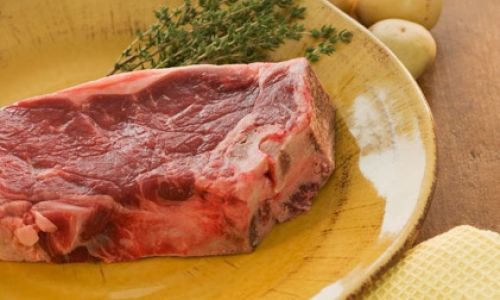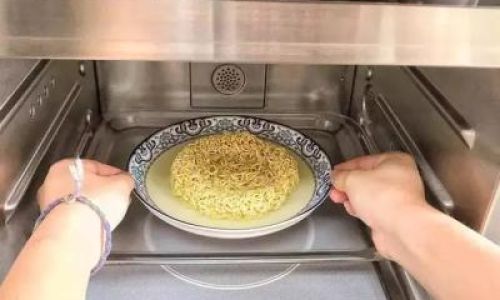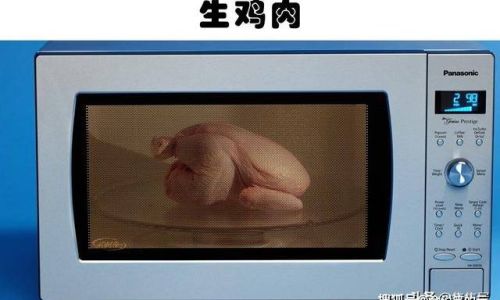Microwaves have become an indispensable tool in modern kitchens, offering speed and convenience for reheating leftovers, defrosting frozen foods, and even cooking meals from scratch. However, when it comes to handling meat—a perishable and potentially hazardous food if mishandled—questions about safety often arise. One common concern is whether it is safe to use a microwave to reheat or cook meat for storage. This article explores the science, risks, and best practices for using microwaves to handle meat, ensuring both safety and quality.
Understanding the Basics of Microwave Cooking
Microwaves work by emitting electromagnetic waves that excite water molecules in food, generating heat through friction. This process is incredibly efficient but can be uneven, creating “hot spots” and cold areas within the same dish. For meat, this uneven heating poses a risk because bacteria like Salmonella, E. coli, and Listeria can survive in undercooked or improperly reheated sections.
The U.S. Department of Agriculture (USDA) recommends cooking ground meats to an internal temperature of 160°F (71°C) and poultry to 165°F (74°C) to eliminate harmful pathogens. Achieving these temperatures in a microwave requires careful attention to power settings, cooking time, and food placement.
Reheating Cooked Meat in the Microwave
Reheating leftovers is a primary use for microwaves, but doing so safely with meat demands adherence to specific guidelines:
-
Temperature Matters:
Meat must be reheated to a minimum of 165°F (74°C) to kill bacteria. Use a food thermometer to verify this, as visual cues like steam or sizzling are unreliable.
-
Even Heating:
Arrange meat in a single layer on a microwave-safe dish. Cover with a lid or microwave-safe plastic wrap, leaving a small vent to allow steam to escape. Stir or rotate the meat halfway through cooking to distribute heat evenly. -
Avoid Overcrowding:
Overloading the microwave prevents proper circulation of microwaves, leading to uneven heating. Reheat meat in small batches if necessary. -
Standing Time:
After microwaving, let the meat rest for 1–2 minutes. This “standing time” allows heat to distribute evenly, completing the cooking process without overcooking.
Defrosting Meat in the Microwave
Thawing meat in a microwave is safe but requires immediate cooking. Microwaves penetrate frozen meat, causing external layers to thaw rapidly while the interior remains frozen. This temperature difference can promote bacterial growth if the meat is not cooked promptly.
-
Use the “Defrost” Setting:
Most microwaves have a defrost function that automatically adjusts power levels to thaw food gradually. -
Check Frequently:
Pause the microwave every 1–2 minutes to separate thawed sections and ensure even defrosting. -
Cook Immediately:
Transfer thawed meat directly to a stove, oven, or grill. Do not refreeze microwaved-thawed meat without cooking it first, as bacterial growth may have occurred during thawing.
Storing Reheated or Cooked Meat
Proper storage is critical to preventing spoilage and bacterial growth, regardless of the heating method. When using a microwave to reheat or cook meat:
-
Cool Rapidly:
After reheating, transfer meat to shallow containers (no deeper than 2 inches) to facilitate quick cooling in the refrigerator.
-
Label and Date:
Use airtight containers and label them with the date. Cooked meat can be refrigerated for 3–4 days or frozen for 2–6 months. -
Avoid Repeated Reheating:
Reheating meat multiple times increases the risk of bacterial contamination. Only reheat portions you intend to consume immediately. -
Discard Suspect Food:
If meat develops an off odor, slimy texture, or unusual color, discard it immediately, even if refrigerated within the recommended timeframe.
Risks of Improper Microwave Use
Using a microwave improperly can lead to foodborne illness. Common pitfalls include:
-
Inadequate Heating:
Partial cooking leaves bacteria alive, which can multiply rapidly if the meat is stored improperly. -
Cross-Contamination:
Raw meat juices can contaminate surfaces, utensils, or other foods. Always clean microwaves thoroughly after handling raw meat. -
Overheating:
High power settings can dry out meat, creating tough textures while failing to kill bacteria in thicker sections.
Microwave-Safe vs. Unsafe Containers
The type of container used affects both safety and quality:
-
Avoid Plastic Wrap Direct Contact:
Some plastics may leach chemicals into food when heated. Use microwave-safe covers or paper towels instead.
-
Glass and Ceramic:
These materials distribute heat evenly and are less likely to warp or release toxins. -
Metal and Foil:
Never use metal in a microwave, as it causes sparks and damage.
Alternatives to Microwaving Meat
While microwaves are convenient, alternative methods may offer better control over cooking temperatures:
-
Oven Reheating:
Baking meat at 325–350°F (163–177°C) ensures even heating, though it takes longer. -
Stovetop Skillet:
Ideal for small portions, allowing direct monitoring of texture and temperature. -
Sous-Vide:
A precision cooking method that maintains meat at a consistent temperature, though it requires specialized equipment.
Myths About Microwaving Meat
Several misconceptions persist about microwave safety:
-
“Microwaves Destroy Nutrients”:
All cooking methods reduce some nutrients, but microwaving often preserves more vitamins due to shorter cooking times. -
“Microwaved Meat Tastes Rubbery”:
Overcooking, not the microwave itself, causes toughness. Proper timing and standing time mitigate this.
-
“Microwaves Cause Cancer”:
No evidence links microwave use to cancer. The non-ionizing radiation they emit does not alter food’s molecular structure.
Special Considerations for Different Meats
The type of meat influences microwave safety:
-
Ground Meat:
Higher risk of bacterial contamination due to increased surface area. Ensure thorough cooking to 160°F (71°C). -
Poultry:
Bone-in pieces may heat unevenly. Remove skin and bones or adjust cooking time accordingly. -
Fish:
Delicate and prone to drying out. Use low power settings and cover with a damp paper towel. -
Cured Meats:
Processed meats like sausages or bacon may splatter in the microwave. Pierce casings and use a microwave-safe splatter guard.
The Role of Moisture in Microwave Cooking
Meat’s moisture content affects reheating outcomes. Dry meats (e.g., roasted chicken) benefit from a splash of broth or water before microwaving to prevent toughness. Fatty cuts may splatter; cover with a lid to contain mess.
International Perspectives on Microwave Safety
Regulatory agencies worldwide endorse microwave use for meat when guidelines are followed:
-
USDA:
Advocates for thermometer use and immediate refrigeration.
-
European Food Safety Authority (EFSA):
Emphasizes avoiding cross-contamination and reheating to steaming temperatures. -
Food Standards Australia New Zealand (FSANZ):
Recommends stirring food during microwaving to eliminate cold spots.
Innovations in Microwave Technology
Modern microwaves with sensor cooking and inverter technology offer improved safety. Sensor cooking adjusts time and power based on steam levels, while inverter microwaves provide consistent heating, reducing the risk of overcooking.
Conclusion: Balancing Convenience and Safety
Microwaves are a safe, efficient tool for reheating and cooking meat—provided users follow protocols. By prioritizing temperature control, even heating, and proper storage, you can minimize risks and enjoy the convenience microwaves offer. Whether you’re defrosting a steak, reheating last night’s chili, or cooking a quick chicken breast, vigilance and adherence to food safety guidelines remain paramount.
In an era where time is precious, the microwave remains a kitchen ally. Yet, its power demands respect. Treat it not as a shortcut but as a precision instrument—one that, when wielded correctly, preserves both flavor and health.






0 comments